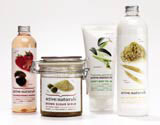Cleaning up your lifestyle
Clive Walker wants to be sure you don’t mistake the sink unblocker for your foot scrub as supermarkets rebrand their beauty and household cleaning products

An Englishman’s home has always been his castle and today it’s become a national obsession. The plethora of programmes dedicated to interior design are just one example of British consumers’ obsession with their homes. We are among the biggest consumers of DIY products in Europe and home ownership, at almost 70 per cent, is also among the highest.
Retailers are waking up to the opportunities this offers. From air-fresheners to dishwashing liquid, candles to bubble bath, the ‘home accessories’ sector is in the throes of a makeover of its own.
In two recent examples Jeyes is launching an Elmwood-designed air freshener that is positioned and packaged to look like upmarket fragrance (DW 25 September), and Sainsbury’s launched its Active Naturals range (DW 25 September) with packaging by Smith & Milton deliberately designed to blur the distinction between household cleaning and beauty products.
But can the bottle of bleach or the oven scourer really become an object of desire? What lessons can designers take from packaging in other sectors to help make these products more aspirational? What consumer trends are driving these changes in tactics? And what are the implications of transplanting health and beauty packaging to the household category?
Sen’chi, the new air-care range from Jeyes, is positioned as a meeting of haute couture and fine fragrances, illustrating the aroma sector’s shift from functional to aspirational.
According to Elmwood head of brand innovation Greg Taylor, a series of factors is having an impact on packaging design in this sector. He highlights so-called cocooning, where consumers increasingly choose entertaining at home over a night on-the-town, and an increasing awareness of brand and design as important considerations.
‘Times have changed. The Walkman generation is attuned to design and less concerned with expense. Today’s consumers no longer turn 40 and wear a Marks & Spencer sweater and matching slippers until the day they drop. People want to feel young and fill the home with stylish household goods,’ he says.
This combination, he says, is fuelling demand for traditionally drab household products to look and smell more like collectible accessories.
Demographics are also playing a part. These days men are relatively comfortable with a fancy bottle of floor cleaner. But designers claim they’re disconcerted by the traditionally ‘feminine’ fragrances found in many household products. Men want their washing-up liquid, for example, to look and smell masculine.
‘Men are at home with soap suds up to their elbows, but they still want cleaning products to look like tools,’ says Taylor.
Supermarkets like Sainsbury’s and Somerfield are tapping into this market by accentuating the emotive qualities of products we wouldn’t normally give a second glance. Crucially, designers are adopting the familiar vocabulary of health and beauty to deliver more premium cues.
Smith & Milton client services director Lawrence Barnett says this is a trend likely to continue. ‘The household sector is growing up fast and will increasingly look to health and beauty for inspiration to develop the appeal and choice of products in a sector where there is huge growth potential.’
Sainsbury’s cross-category range, Active Naturals, ties together a 130-strong product range embracing everything from skinand haircare to kitchen cleaners and aromatherapy oils. It uses language and photography more usually associated with health and beauty products, citing natural ingredients or calming fragrances, to enhance the popularity of cross-category shopping.
‘Active Naturals uses structures and graphics to make contents inviting and therefore nice to have in the bathroom or the utility room. This suggests an end benefit similar to health and beauty where functionality goes hand-in-hand with lifestyle,’ adds Barnett.
But there are serious implications to blurring the clear distinctions between products that are traditionally stored under the sink and those found in the beauty cabinet. In the bathroom, where toothpaste, deodorants and shampoo are as near to hand as bleach, air-freshener and bath cleaner, there is potential for customer-confusion if product smell and shape is indistinguishable.
Somerfield has rejected the familiar alpine fragrance from its own-brand health and beauty range, because it is increasingly applied across skin-care and cleaning categories. The fear – albeit far fetched – is that consumers might not be altogether certain whether to squirt contents on the face or down the loo.
And Taxi Studio creative director Alex Bane, who worked on Somerfield’s own-brand design, questions the wisdom of reducing the contrast between product function. He argues ranges like Active Naturals might create problems for consumers.
‘Supermarkets rigidly demarcate to avoid confusion, but when purchases are taken home then mistakes can occur,’ says Bane. ‘Size determines use with cleaning products traditionally larger than health and beauty. But even this distinction is now affected.’
If designers are to be believed, then we’re buying aspirational household basics because, at heart, we don’t want cleaning to be just another chore.
Instead, household products such as bleach, kitchen wipes, air fresheners and washing-up liquid are becoming an affordable indulgence of light and fragrance. But no matter how clever the packaging becomes it’s hard to imagine wiping the toilet rim as an everyday treat.
-
Post a comment




